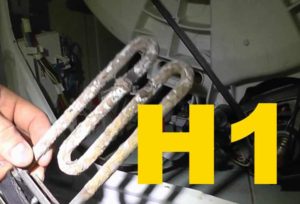 Modern washing machines have minicomputers inside. They control the washing without human intervention. If a malfunction occurs, then this computer shows an error code on the display. According to him you can find out the cause of this malfunction. Different washing machines have different error codes. The Samsung washing machines in question use alphanumeric designations.
Modern washing machines have minicomputers inside. They control the washing without human intervention. If a malfunction occurs, then this computer shows an error code on the display. According to him you can find out the cause of this malfunction. Different washing machines have different error codes. The Samsung washing machines in question use alphanumeric designations.
Error h1 on the washing machine Samsung occurs very often.
What is error H1?
What does this kind of error mean? Let's look into it. If your Samsung machine shows error h1, you should stop using it immediately and have the error decoded. Continued use will cause serious damage or may break the machine permanently. Depending on the year of manufacture and the specific model, the error code looks like H 1, H 2, HO,HE 1, NOT 2. In essence, it is a single error indicating a problem with heating water. The first thought is the problem is in the heating element, you have to take the cover off and check it. Take your time to do this.
How to fix error H1? Before taking any action to repair the washing machine, you need to find out the cause of this problem and understand the device of the washing machine Samsung.
The first subtlety is that the heating element in the Samsung "washer" is not located behind the wall, as in many washing machines, but in front of the tank. To get to the heating element it is necessary to remove the front wall of the device, and with it the control panel. A multimeter will come in handy for diagnostics. But first it is necessary to find out the causes of the error.
Important: Before opening the machine, do not forget to unplug it from the mains.
Details of the issue
Causes of error H1
Error h1 on the washing machine samsung can appear in the following cases:
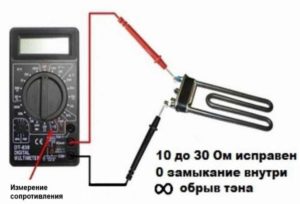 - if the water is not heated before washing;
- if the water is not heated before washing;
- If the water temperature is too high during the washing process;
- If when drying the laundry began to overheat steam.
These processes have several causes. The most common ones are:
- broken temperature sensor;
- wires in the heating element are short-circuited;
- the heating element itself is broken;
- all elements are functional, but the overheating protection of the device is activated by mistake.
Let's consider each cause in detail.
Short circuit (breakage) of wires or problems with the heating element
Once you have access to the heating element, you need to check that it is in good working order. Don't forget to remove the protective cover on the THEN. It is located in the recess directly under the hatch. First do a visual inspection.
1) There are two contacts under the protective cover. These have wires attached to them. Carefully inspect these wires and contacts. They may have oxidized and therefore lost contact. Check that the wires are secure. They should not be loose.
2) The power surge may have damaged the heating element itself. To check this, use a multimeter. But first disconnect the wires from the heating element. The voltage measurement will be done in ohms. The normal value for the operation of the heater is 27-30 ohms. If there is any deviation, this is a signal of a problem. A value of 0 indicates an internal short circuit. If an infinity sign appears, then there is a breakage. If you saw a value of 1, you can be sure that the heating element is burned.
3) Measure the resistance on the wires coming out of the washing machine. If the reading is about the same, then there is no problem with the power supply. If the deviations are significant, then you need to look for the location of the damaged wire. The broken wire will have to be replaced.
This operation is not complicated and will not cause problems.
But here's how to replace the heating element in more detail:
1) Between the contacts, which we checked at the beginning, there is a nut. It is necessary to unscrew it. Now the heating element can be taken out.
2) Grasp the contacts and start pulling it towards yourself, rocking it from side to side.
3) After pulling out the old heating element, you will see a hole that leads into the tank. The tank itself needs to be cleaned of scale and other debris. An old toothbrush will do the trick. Slip it into the hole and clean the tank.
4) Clean the contacts with a special cleaner to eliminate the possibility of oxidation.
5) Lubricate the edges of the hole with soap, for example, to reduce resistance. Carefully insert a new serviceable heating element into this hole. Remember the rubber band of the heating element. It must not be displaced, much less damaged.
6) Then reconnect the wires, put the protective cover and put everything back together.
7) After running the test wash, make sure that the machine is in good working order.
Problems with the temperature sensor
If the heating element and wires are intact and there is no damage, but the washing machine still does not work, then the reason may lie in the temperature sensor. Samsung washing machines use thermistors as these sensors.
The thermistor is located directly on the heating element.
1) First remove the cover at the front of the machine and the protection cover for the heating element.
2) You will see a black (sometimes gray) plastic element right on the THEN itself.
3) Check the resistance with a multimeter. Its normal value is 35 kOhm. If a deviation from this value is present, you will need to replace the sensor.
4) Replacing the temperature sensor is not difficult. You must disconnect all contacts from it and carefully remove it. You can use a flathead screwdriver to pry it open. Then put a new element in its place. It is important to remember where the contact was attached and not to mix them up during installation.
The overheat protection came on
Overheat protection in Samsung washing machines is arranged rather uncomplicated. Inside the heating element is a coil, connected to its contacts with a fusible material. If the coil overheats, this fuse melts, breaking the circuit, and the coil remains intact. The only thing left to replace is the sensor. But there is a problem. Not all machines have this option.
There are two options:
1) The sensor is inseparable from the heating element. You have to change the whole heating element, as described above.
2) The safety elements of the heating element are made of ceramic. In case of overheating they simply break off, which also breaks the circuit.
Proceed as follows:
- find the plastic rivets on the base of the heating element and break them off;
- The ceramic fuse will fall off and must be cut, for example, with a hacksaw and put back in place;
- The damage to the body of the heating element should be glued with heat-resistant glue;
- check the resistance with a meter and install all the elements in their places.
- Check if the washing machine is in working order.
Prevention of error H1 on washing machines
We have figured out how to eliminate error H1 on Samsung washing machines. But how to avoid it?
1) Watch the quality of water. Bad water contains impurities that form scale on the heating element. Install a water filter. This will save you from this problem.
2) Use quality parts when repairing your washer-dryer. This will increase its service life and prevent frequent breakdowns.
3) Do not neglect the operating conditions of your washing machine. These are listed in your washing machine's manual.
4) Regularly do the internal cleaning of the washing machine from the scale. There are special products for this purpose. This will increase its service life.
If the error H1 appeared on your samsung machine it can be repaired yourself. The main thing is to heed the advice and do everything according to the instructions. But unskilled intervention will cause more problems than good. It's up to you to do it yourself or turn to professionals.

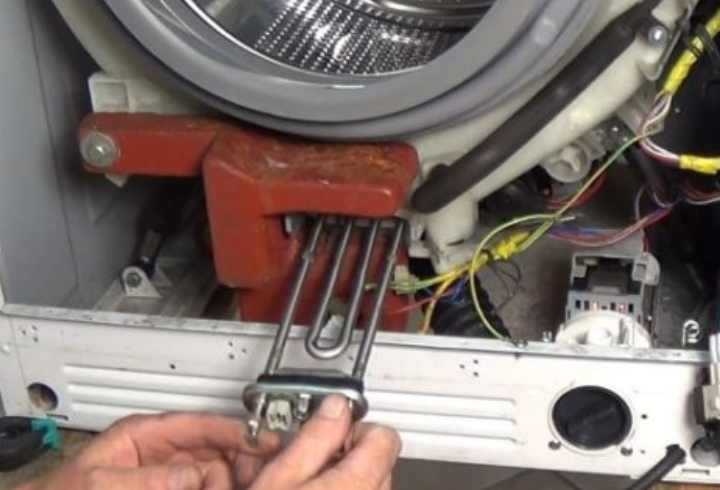
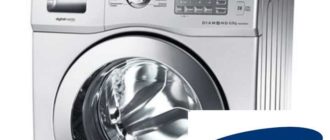

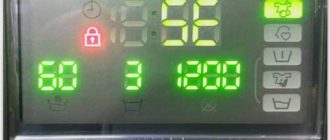

Error H1 appears at 15 minutes of machine operation. The heating element and the temperature sensor are fine. The heater relay is working. Can the darlington matrix that turns on the heater relay be glitched? The washing programs at 30 and 40gr work without any errors, but starting from 60gr the machine stops on the 15th minute. What is it? Firmware failure?